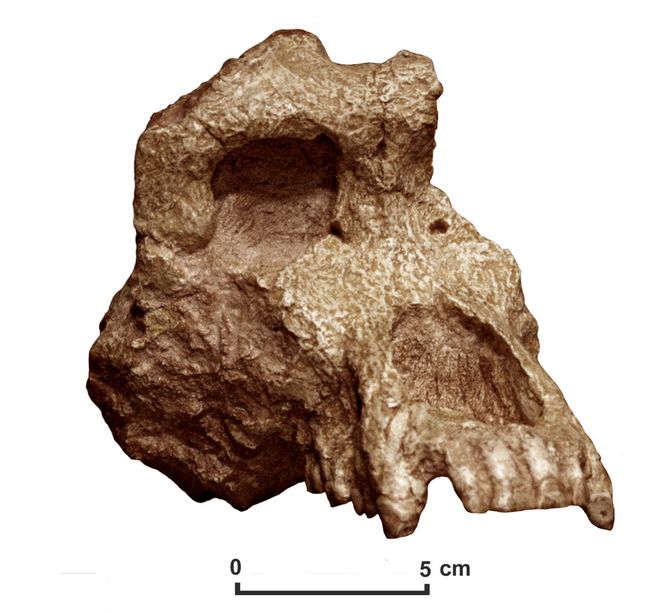Athena Review Image Archive ™
Ouranopithecus macedoniensis skull

Skull of Ouranopithecus macedoniensis (Mus.Nat.Hist.Paris, cast).
Ouranopithecus was a Late Miocene great ape (hominoid) represented by two species,
O. macedoniensis (9.6–8.7 mya) from Greece and Bulgaria (de Bonis and Melentis 1977), and O. turkae (8.7–7.4 mya) from Turkey (Gulec et al 2007)
Ouranopithecus had thick molar enamel, and showed considerable sexual dimorphism, The most complete Ouranopithecus skull (shown in figure) appears to be a male, but it has relatively small canines comparable to those of a female gorilla. Based on O. macedoniensis's dental and facial anatomy, it has been suggested that Ouranopitheines were dryopithecines. However, Ouranopithecines are probably more closely related to the Ponginae subfamily of hominoids (including Sivapithecus, Lungfengpithecus, Khoratpithecus, and the modern orangutan, Pongo). O. macedoniensis shares derived features with some early hominins, such as the frontal sinus, a cavity in the forehead, but they were likely not closely related.
References:
Begun, David R. 2005. Relations among great apes and humans: New interpretations based on the fossil great ape Dryopithecus. American Journal of Physical Anthropology. 37: 11–63.
de Bonis, Louis and J. Melentis, J. 1977. Les primates hominoides du Vallesien de Macedoine (Grece): etude de la machoine inferieure. Geobias. 10: 849–855.
Gulec, Erksin S., et al. 2007. A new great ape from the lower Miocene of Turkey. Anthropological Science. 115: 153–158.
Koufos, George D and Louis de Bonis 2005. The late Miocene Hominoids Ouranopithecus and Graeceopithecus. Implications about their relationships and taxonomy. Annales de Paléontologie. 91: 227–240.
Copyright © 1996-2020 Rust Family Foundation (All Rights Reserved).